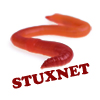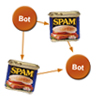
Image of the Day: Dissecting The ZeroAccess Crimeware
We know a lot about the effects of malicious programs like rootkits and Trojan downloaders. The job of finding out exactly how the programs work, however, is painstaking. That’s because most malware authors worth their salt take steps to make their creations hard to understand. Code obfuscation and anti-debugging are common features of most sophisticated, modern malware. With patience and endurance, however, researchers are often able to pierce the veil, anyway.













